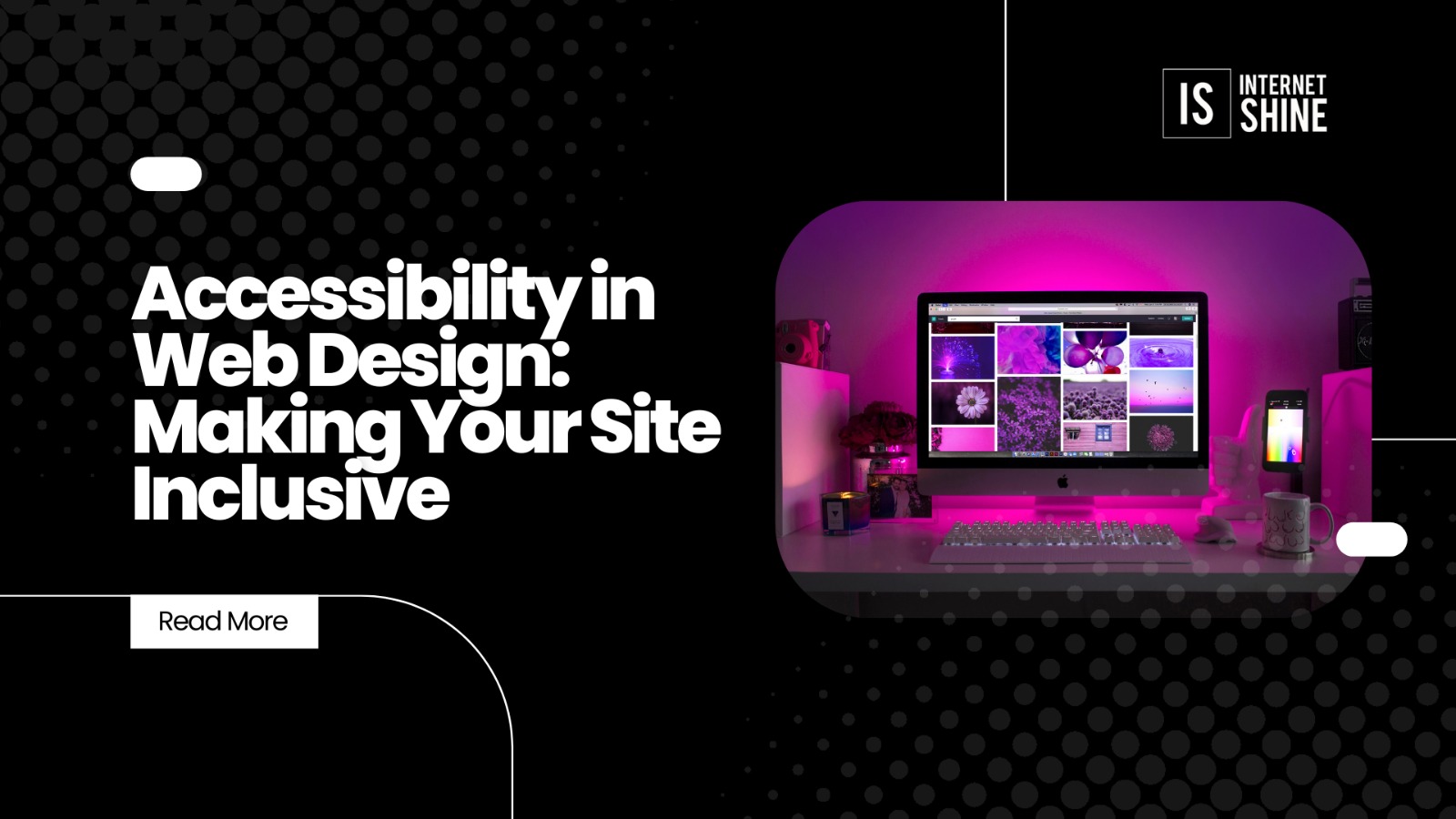Accessibility in Web Design: Making Your Site Inclusive
In today’s digital age, the internet is an integral part of our daily lives. From shopping and banking to education and entertainment, much of what we do depends on our ability to access and navigate websites. However, for millions of people with disabilities, many websites remain inaccessible, creating significant barriers. By prioritizing accessibility in web design, we can create inclusive online environments that benefit everyone.
Understanding Web Accessibility
Web accessibility ensures that websites, tools, and technologies are designed and developed so that people with disabilities can use them. This includes those with auditory, cognitive, neurological, physical, speech, and visual impairments. Accessible web design allows these users to perceive, understand, navigate, and interact with the web effectively.
Why Accessibility Matters
- Legal Compliance: Many countries have laws and regulations that mandate web accessibility. In the United States, for example, the Americans with Disabilities Act (ADA) requires websites to be accessible to people with disabilities.
- Broader Audience: Making your site accessible opens it up to a broader audience. According to the World Health Organization, over a billion people, or about 15% of the global population, live with some form of disability.
- Enhanced SEO: Accessible websites often perform better in search engine rankings. Search engines favor websites with clear structures, alt text for images, and comprehensive metadata, all of which are components of accessible design.
- Improved User Experience: Accessibility features often enhance the overall user experience. Features like larger text, high-contrast visuals, and easy navigation can benefit all users, not just those with disabilities.
Key Principles of Accessible Web Design
- Perceivable: Information and user interface components must be presentable to users in ways they can perceive. This includes providing text alternatives for non-text content, creating content that can be presented in different ways, and making it easier for users to see and hear content.
- Operable: User interface components and navigation must be operable. This involves making all functionality available from a keyboard, providing users enough time to read and use content, and helping users navigate and find content.
- Understandable: Information and the operation of user interfaces must be understandable. This means making text readable and understandable, ensuring web pages appear and operate in predictable ways, and helping users avoid and correct mistakes.
- Robust: Content must be robust enough to be interpreted reliably by a wide variety of user agents, including assistive technologies. This requires maximizing compatibility with current and future user tools.
Practical Steps to Enhance Accessibility
1. Use Semantic HTML
Semantic HTML tags like <header>, <main>, <nav>, and <footer> help screen readers and other assistive technologies understand the structure of a webpage. Proper use of headings (<h1>, <h2>, etc.) ensures content is organized logically.
2. Provide Text Alternatives
Ensure all non-text content has a text alternative. This includes using alt attributes for images, providing transcripts for audio and video content, and ensuring form controls have associated labels.
3. Ensure Keyboard Accessibility
All interactive elements, such as links, buttons, and form controls, should be accessible via keyboard. This includes managing focus order and ensuring that users can navigate through content without a mouse.
4. Design for Visual Impairments
Use high-contrast color schemes, ensure text is resizable, and avoid relying solely on color to convey information. Provide options for users to customize the appearance of your site to meet their needs.
5. Simplify Navigation
Clear and consistent navigation helps all users, especially those with cognitive impairments. Use descriptive link texts, provide a search function, and organize content logically.
6. Test with Real Users
Regularly test your website with users who have disabilities. Tools like screen readers can simulate some experiences, but real-world testing provides the most valuable insights.
Tools and Resources
- Web Content Accessibility Guidelines (WCAG): The WCAG provides comprehensive guidelines for making web content accessible.
- WAVE: A web accessibility evaluation tool that helps identify accessibility issues.
- Axe: A powerful accessibility testing tool that integrates with many development environments.
- Screen Readers: Tools like NVDA, JAWS, and VoiceOver can simulate the experience of visually impaired users.
Conclusion
Creating an accessible website is not just about compliance; it’s about inclusion and equal access to information. By integrating accessibility into your web design process, you ensure that your content is available to the widest possible audience, enhancing the user experience for everyone. Embrace accessibility not as an afterthought but as a fundamental aspect of good web design. Your users—and your business—will thank you.
Start today by evaluating your current website’s accessibility and implementing these best practices. Together, we can build a more inclusive internet for all.

